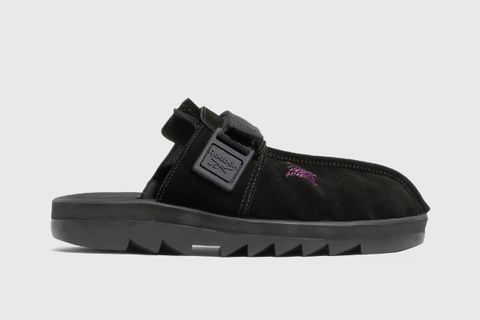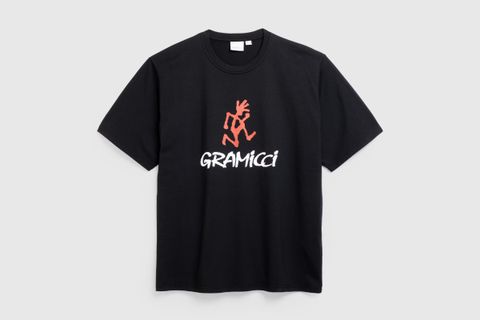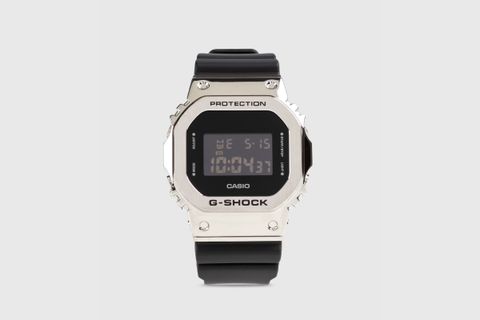Everything Is Merch
The following article was co-written by Ana Andjelic, founder of The Sociology of Business, and Eugene Rabkin, founder of StyleZeitgeist. The views and opinions expressed in this piece are those solely of the authors and do not necessarily reflect the position of Highsnobiety as a whole.
Is Millionaire Speedy a luxury bag or merch? What about the Balenciaga Maxi Pack? Some people's idea of merch is Trump’s gold high-tops. Merch as a status symbol. Merch as a subgenre. Merch as a style statement. Merch as an identity marker. Merch as something of waning cultural relevance.
How old-fashioned.
Rather than being a retail’s side gig, modern merch has become its main act. Merch has always been a high-margin moneymaker, so a subtle but all-encompassing transformation of retail’s operating principle into merch makes economic sense. Through the process of transubstantiation from a youth culture artifact to a killer business model merch has been turned from its original purpose, meaning and aesthetics into retail's main product category and the only remaining genre. Consumers have learned to buy everything as merch, and there is no going back.
The term “merch" originally referred to items made for music fans, where items like t-shirts were sold on a band’s or musician’s tour. From music, merch spread to sports, film, gaming, art, fashion, design, travel, and entertainment.
Merch’s original value has never been in the physical item itself – after all, a band shirt is just a t-shirt, but in the social and cultural capital associated with it. Partly this stemmed from the fact that originally one could only buy merch at concerts, thus signaling true allegiance to a cultural artifact. Thus, unintentionally, merch also operated on the concept of scarcity.
This social and cultural capital made merch the opposite of a commodity. Commodities are interchangeable (who can tell the difference between a Polo and a Tommy Hilfiger shirt if it wasn’t for the logo?); merch was a unique expression of a specific time, place, community, and context. First streetwear brands, often run by music enthusiasts in the pre-e-commerce age, also operated on the same principle. Supreme traced a social and cultural topography of its brand’s global community, but that community formed exactly because you could only buy Supreme at its Lafayette Street shop in New York. Through its merch, Supreme held this community together across time and geography. It connected people, conversations, and symbols into one Supreme social network.
The nature of merch changed as merch became commoditized in the early 1990s by Hot Topic, a chain store that gave access to band t-shirts to teenage mall rats. At the same time as streetwear became more important, it has also turned merch into a commodity, which became even more ubiquitous with the rise of e-commerce. These developments removed the necessary friction that made merch a valuable cultural symbol.
Merch is always a physical object and a symbol. A band t-shirt is a sign, and as any sign, it consists of a signifier and a signified. In the past couple of decades postmodern culture has been actively engaged in the removal of the signified in order to expand the consumer base for the signifiers, themselves valuable IP properties. Whereas in the past a person wearing a Nirvana t-shirt was probably a fan of the band’s music, today no such guarantee exists (and many more shirts are sold). This often precludes one of the original purposes of merch, a signaling of belonging to a certain (sub)culture.
Still, the meaning-making of merch has not disappeared, but merely shifted. A person wearing a logoed Balenciaga tee is also signaling some kind of meaning, as is the person wearing one with the logo of A24, the trendy film production company. The point remains the same, the need for signaling via one’s possessions has not gone away, but, in the world of social media, actually increased.
One cultural entity that plays with our culture’s obsession with merch is MSCHF. Take “The Ultimate Participation Trophy” by Tiffany & Co. and MSCHF, handcrafted and released in a limited series of 100 trophies. The trophy’s physical features combine silver and this brand signature blue color, along with equestrian themes (nodding to the Woodlawn Vase, the first trophy designed by Tiffany & Co.). The trophy’s cultural and symbolic capital is twofold. First, it celebrates Tiffany & Co. tradition of trophy designs and marks 160th anniversary of Tiffany & Co. handcrafting sports trophies at its Rhode Island workshop.
Second, it has been made by MSCHF, which endows it with playful, subversive connotations (the figure is riding a horse while holding a ball and swinging a tennis racquet) and speaks to communities and subcultures who are familiar with MSCHF and who regard it in the context of this familiarity.
Full readability of “The Ultimate Participation Trophy” requires previous knowledge of MSCHF’s work. Like text, merch is more of a process and projection rather than a finished, definitive thing. Tiffany & Co.’s Cat Street Tokyo drop doesn’t translate if we are not familiar with Tiffany & co.’s previous drops and with Cat Street and its social and cultural meaning. Outside of it, Tiffany & Co.’s Cat Street Tokyo merch has little value. Within it, it advances Tiffany & co.’s brand story and cultural influence, such as it is. Knowledge of what the new thing is going to be dropped, when, who made it, what came before, and why it is relevant are all layers of social and cultural value that turn a piece of merch into a social and cultural object.
Sometimes, merch turns into a myth object. Nike Air Jordan 1 OG High Chicago are from 1985 and designed by Peter Moore, and today are one of the most iconic and expensive examples of merch.
Status-signaling luxury items today also act as merch, as they carry connotations of social and economic standing; high-margin items that luxury brands produce, like keychains, scarves or lipsticks are merch, as they act as signifiers of social class and give their owners association with social and economic status. Anything can be turned into merch if infused with enough symbolic value and cultural capital. There are several types of merch circulating in the cultural markets:
Toys. Toy merch are social objects meant to connect and invite play, and are infinitely meme-fiable. They are made for the internet. They also signal that their owners can have whatever they want, but that the traditional fashion aesthetics bores them. Examples are J.W. Anderson canary and pigeon bags, Thom Browne dog bag, Hermès Quelle Idole bag, Marni green furry pom pom earrings.
Puns. Wearable puns feature objects at odds with their context or meaning. Examples are Gucci x Balenciaga The Hacker Project, Balenciaga’s IKEA tote bag, Moschino’s dresses as pieces of furniture, Off-White, Palace’s Jesus Gilet and tabloid jacket, J.W. Anderson asparagus purse, or Bonnie Cashin and Cinzia Ruggieri’s glove bag.
Simulation. In a simulation game, real world activities, such as city strolling sports, going to a supermarket, are explored through products: what would you wear if … you were building a civilization? Found yourself in the 18th century? Visit a European court? Examples are Hermès Bolide bag, which takes its cues from the world of skating, with a base that reflects the shape of a skateboard, decorated with street art, and the Chanel rare collector’s runway supermarket grocery basket chain tote minaudière. Other examples are Thom Browne’s Fall 2022 inspiration the Island of Misfit Toys.
Fantasy. Fantasy is a game of exploration where players assume the role of a protagonist in a narrative. Fantasy games often have challenges based on puzzles, strategy or action sequences. Examples are oversized sleeves, square shapes, medieval motifs, as in Baleciaga’s F/W ‘21 collection, and surrealist interpretations as can be seen in J.W. Anderson and Schiaparelli..
Winks. Winks work when details are randomized and represent game elements such as colors, prints, ideas, and moments. Winks are strategic, with every detail having a unique power and message within the game. Examples are Hans Kjøbenhavn “Grip Dress,” LL Bean tags, J.W. Anderson shoes and wearable technology details, McQueen’s clutch and Hermès horseshoe bag.
Kitsch. Kitsch is a game that’s calculated to provoke through sentimentality and purposeful poor taste meant to be appreciated in an ironic way. See Casablanca or early Vetements.
Camp. A highbrow evolution of kitsch, camp is a knowing, often humorous and theatrical playfulness with bad taste. Examples include Franco and Jeremy Scott’s Moschino and Jean-Paul Gaultier.


